UMSU election results
Colton McKillop, staff
The preliminary results of UMSU’s 2023 general election are in.
Tracy Ayebare Karuhogo will be UMSU’s next president, receiving 32.9 per cent of votes to Victoria Romero’s 32.5 per cent — a difference of just 16 votes. Justin Langan received 22.1 per cent of ballots, while Roleen Alarab earned 12.5 per cent. Langan’s name appeared on the ballot despite his disqualification from the race two days before the vote.
Divya Sharma beat Elishia Ratel for the position of vice-president community engagement with 52.9 per cent of the votes to Ratel’s 47.1 per cent.


Liam Pittman is the new vice-president advocacy, earning 52.9 per cent of the vote, with competitor Ivan Nuñez Gamez receiving 47.1 per cent.


Christine Yasay received 90.4 per cent “yes” votes in a race where she ran unopposed for the position of vice-president student life.

New vice-president finance and operations Vaibhav Varma also ran unopposed following the disqualification of fellow candidate Peter Akiode. Varma earned 87.2 per cent of “yes” votes.

Anita Ayame won 56.4 per

cent of the vote to Zima Ndukwe’s 43.6 per cent in the race for Black student community representative.
Alex Rana ran unopposed for 2SLGBTQIA+ community representative, receiving 83.6 per cent “yes” votes.

The race for international student community representative was more competitive, featuring four candidates. Andrea Nguyen won 33.6 per cent of votes, beating Zeeshan Nisar’s 25.2 per cent. Dhruvi Shah and Naufil Ahmed Khan received 20.8 and 20.4 per cent, respectively.
The position of racialized community representative will be filled by Allisther De Castro, who earned 59.1 percent of votes, defeating Sofreen Sandhu’s 40.9 per cent.
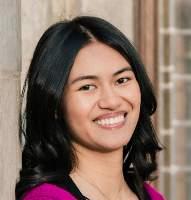
Ishkode Catcheway received 89.8 per cent “yes” votes in a race where she ran unopposed.
Witta Irumva and Caleigh Guillou both ran unopposed for their positions. Irumva won the position of women’s community representative with 93 per cent “yes” votes.
Guillou received 90.2 “yes” votes for accessibility community representative.
Two candidates disqualified from UMSU election
Gillian Brown, staff available to all members of UMSU.
Two UMSU executive candidates, Peter Akiode and Justin Langan, were disqualified from elections last week. Langan received two disqualifications, though the first was overturned through an informal appeal.
While the rulings are available on the union’s website as of publication, only the second disqualification that Langan received was announced to the public out of the three. Akiode’s disqualification on March 5 and Langan’s first disqualification on Feb. 17 were never announced. Langan’s second, ruled on March 8, was not announced until a March 10 email containing the information was sent to all UMSU members 45 minutes before polls closed. Langan’s name appeared on the ballot, while Akiode’s did not.
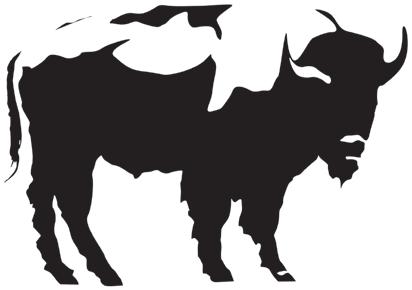
Akiode, a candidate for vice-president finance and operations, was disqualified following a complaint that he was using resources while campaigning that were not
Specifically, Akiode was seen tabling in University Centre as an employee with the company Neo Financial, which the complainant argued provided the candidate with additional opportunities to spread awareness of their name and likeness. Others also reported seeing Neo Financial representatives promoting Akiode’s campaign while discussing their services with students. Chief Returning Officer (CRO) Erin Robert determined these actions to be against the rules of the election.
A second complaint that contributed to Akiode’s disqualification alleged that he had used bots to express support for his campaign on Instagram. The complaint provided 53 examples of comments posted in rapid succession on the Manitoban’s Instagram post introducing the candidates, all featuring similar messages encouraging students to vote for Akiode — including at least five from a
UMSU president announced after emergency meeting
Gillian Brown, staff
Following an emergency meeting on Monday concerning UMSU’s recent general election, the union’s board of directors ruled that Tracy Ayebare Karuhogo will become the next UMSU president with 32.9 per cent of the total vote.

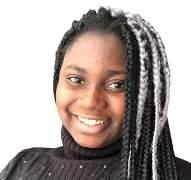

The meeting was scheduled after the disqualification of former presidential candidate Justin Langan and his subsequent appeal of the ruling to the UMSU judicial board. The board eventually upheld the disqualification, but in accordance with the appeal process, Langan remained on the ballot during the election while his appeal awaited a decision.
Chief Returning Officer (CRO) Erin Robert presented a motion to have the presidential votes voided, which would have required another vote to be held involving the remaining three candidates — Karuhogo, Victoria Romero and Roleen Alarab.
The union announced its new president via its Instagram on Monday night, but disabled comments on the post.
UMSU’s board of directors ruled the CRO’s motion to be out of order. Before that, the March 10 email about Langan’s disqualification received by UMSU members 45 minutes before polls closed said that any votes for this candidate will be voided.”
single account.
Akiode did not respond to multiple requests for comment.
Presidential candidate Justin Langan faced disqualification last month for allegedly breaking rules regarding pre-campaigning.
The complaint claimed that one of Langan’s official volunteers made posts on social media promoting his campaign before the official campaign period began. This was not the only complaint made against Langan, but it was the first that resulted in disqualification.
Robert’s ruling determined that Langan’s campaign had “compromised the integrity of the entire election should [she] let [him] continue.” Despite this, Langan’s initial disqualification was overturned after an informal appeal and he was permitted to continue in the presidential race while receiving 30 demerits.
The UMSU election manual requires the CRO to bring requests of this nature to the judicial board for review. However, Robert said that “due to the time sensitive nature” of the issue and recent resignations on the judicial board, she went to the UMSU board of directors instead.
Robert’s decision to disqualify Langan claimed that he broke the rules outlined in the elections manual and that he violated copyright law by plagiarizing a copyrighted website.
Langan acknowledged that the “navigational portion” as well as text on his website containing the phrase “this is your movement” were similar to U.S. Vermont Senator Bernie Sanders’s webpage, but he does not believe he violated any copyright law.
The disqualification upheld by the judicial board was Langan’s second. The first concerned rules allegedly broken by Langan’s campaign regarding pre-campaigning on social media.

Cont’d p. 4 / Emergency >

The Official University of Manitoba Students’ Newspaper March 15, 2023 VOL. 109, NO. 25 SINCE 1914
Cont’d p. 3 / A situation > Trademark refusal diminishes cheese Editorial 8 The great Gruyère scare
Divya Sharma, VP community engagement Liam Pittman, VP advocacy
Christine Yasay, VP student life
Vaibhav Varma, VP finance and operations
Anita Ayame, Black student community rep
Alex Rana, 2SLGBTQIA+ community rep
Andrea Nguyen, international student community rep
Allisther De Castro, racialized community rep
Ishkode Catchway, Indigenous students’ rep
Witta Irumva, women’s community rep
Caleigh Guillou, accessibility community rep
news@themanitoban.com
Tracy Ayebare Karuhogo, president
EDITOR-IN-CHIEF ? editor@themanitoban.com
Gillian Brown
BUSINESS MANAGER ? accounts@themanitoban.com

Dhruv Patel
ADVERTISING CO-ORDINATOR ? ads@themanitoban.com

Richard Plant
MANAGING EDITOR ? me@themanitoban.com
Grace Anne Paizen
COPY DESK ? copy@themanitoban.com
Ezra Taves (ed.)
Morgan Heck

NEWS DESK ? news@themanitoban.com
Colton McKillop (ed.)
vacant (ed.)

Kasey Pashe
Ashley Puchniak
Alicia Rose
RESEARCH & TECHNOLOGY DESK ? research@themanitoban.com
Elah Ajene (ed.)
Robert Moshe Thompson
COMMENT DESK ? comment@themanitoban.com
Sarah Cohen (ed.)
Braden Bristow
Dina Hamid

ARTS & CULTURE DESK ? arts@themanitoban.com

Alex Braun (ed.)
Damien Davis
Jessie Krahn
SPORTS DESK ? sports@themanitoban.com
Joshua Brandt (ed.)
Quinn Mayhew
PHOTO DESK ? photo@themanitoban.com
Ebunoluwa Akinbo (ed.)
Faith Peters
DESIGN DESK ? design@themanitoban.com
Matthew Doering (ed.)
Taeran An
GRAPHICS DESK ? graphics@themanitoban.com
Dallin Chicoine (ed.)
Jenna Solomon
AUDIO DESK ? audio@themanitoban.com
Harmatpreet Brar (ed.)
SOCIAL MEDIA DESK ? social@themanitoban.com
Jory Thomas (ed.)
Violet Baker
VOLUNTEERS THIS ISSUE ?
Chimdinma Chijioke
VOLUNTEER STAFF ?
Lucas Gomes, Matthew Merkel interested in volunteering?
email me@themanitoban.com today!
THEMANITOBAN.COM
109
HELEN GLASS BUILDING
UNIVERSITY OF MANITOBA
WINNIPEG, MB
204. 474. 6535
News
pages 3 to 5
The Manitoban is the official student newspaper of the University of Manitoba. It is published monthly during the summer and each week of regular classes during the academic year by the Manitoban Newspaper Publications Corporation.
The Manitoban is an independent and democratic student organization, open to participation from all students. It exists to serve its readers as students and citizens.
The Manitoban is a member of the Canadian University Press, and our journalistic standards can be found on the Manitoban’s website.

The newspaper’s primary mandate is to report fairly and objectively on issues and events of importance and interest to the students of the University of Manitoba, to provide an open forum for the free expression and exchange of opinions and ideas and to stimulate meaningful debate on issues that affect or would otherwise be of interest to the student body and/ or society in general. The Manitoban serves as a training ground for students interested in any aspect of journalism.
Students and other interested parties are invited to contribute to any section of the newspaper. Please contact the appropriate editor for submission guidelines.
The Manitoban reserves the right to edit all submissions and will not publish any material deemed by its Editorial Board to be discriminatory, racist, sexist, homophobic or transphobic, ableist or libellous.

Opinions expressed in letters and articles are solely those of the authors. Editorials in the Manitoban are signed and represent the opinions of the writer(s), not necessarily those of the Manitoban staff, Editorial Board or the publisher.
A “volunteer staff” member is defined as a person who has had three volunteer articles, photographs or pieces of art of reasonable length and/ or substance published in the current publishing year of the Manitoban.
Any individual who qualifies as a volunteer staff member must be voted in by a majority vote at a Manitoban editorial board meeting. Elected representatives and non-students may be excluded from holding votes as volunteer staff members in accordance with the Manitoban Constitution.
All contents are ©2023 and may not be reprinted without the express written permission of the Editor-in-Chief.
Research & Technology pages 6 to 7
Editorial page 8
Comment
pages 10 to 12
Diversions
pages 13 to 14
Arts & Culture
pages 15 to 17
Sports
pages 18 to 20
2 Vol. 109 No. 25
Working toward an anti-racist U of M
The
U of M hosts its first anti-racism forum
Chimdinma Chijioke, volunteer
The University of Manitoba hosted its first anti-racism forum on Monday, March 6, to connect members of the U of M community with the university’s Anti-Racism Task Force.
The event was collaborative in nature, and those in attendance brought forward ideas and suggestions to support an anti-racist university community.
Reem Elmahi, a fourth-year student and a student member of the Anti-Racism Task Force, attended the forum. She said that the purpose of the event was to “get [community members’] opinions on the Anti-Racism Task Force initiatives.”
Elmahi said that “there was a good mix of people” at the event, and that in addition to members of the Anti-Racism Task Force there were also faculty and students in attendance who “maybe, if this opportunity had never happened, would never get the chance to talk to each other.”
Elmahi said she appreciated that students and faculty members were able to “bridge that gap.”
She thinks that students can feel supported knowing that the U of M has made a commitment to anti-racism that “they are taking steps
toward.”
Vice-president (administration) Naomi Andrew and vice-president (Indigenous)
Catherine Cook co-chair the Anti-Racism Task Force. The group was created in 2022 to help the U of M develop an anti-racism strategy, a commitment that the university made in its 2021 interim strategic plan. The task force has the overarching goal of “dismantling racism in all its forms.”
In its interim report released last month, the task force acknowledged the efforts already made by members of the university community to work toward an antiracist environment, while also highlighting the work that still needs to be done.
One recommendation the report outlines is that the university collect and distribute diversity data to address gaps in diversity and support community members. The task force also proposed that the university educate decision-makers on how to perform their duties through an “anti-racism lens.”
A situation without precedent
< Cont’d from front page
Langan was later disqualified a second time after Robert ruled that he plagiarized from U.S. Senator from Vermont Bernie Sanders’s website. This violation brought him to 65 demerits, more than the 50 required for disqualification.
Langan maintains his innocence regarding all accusations in the complaints.
Robert’s decision to disqualify Langan claimed that he broke the rules outlined in the UMSU election manual. The ruling also alleged that he violated copyright law by plagiarizing a copyrighted website. The election manual campaigning standards outline the fact that campaigns must comply with all laws.
While Langan acknowledged that the “navigational portion” as well as text on his website containing the phrase “this is your movement” were similar to Sanders’s webpage, he does not believe he violated any copyright law.
After the email announcing his disqualification was sent to UMSU members, Langan took to Instagram to publish a video outlining his experience during the election.
“What I did was simply put out the facts and the unfairness of not only how I was treated but how the student body was,” he said regarding the video.
Despite his disqualification, Langan said that he will continue to advocate for students.
“I will definitely not stop my involvement with bettering the environment for students, but I’m just going to have to do it from outside of UMSU,” he said.
The frustration for Langan was, “how can I hold the CRO and the judicial board accountable as a candidate?”
Robert said that the main policy holding her position accountable is that all CRO decisions and rulings can be overturned by the UMSU judicial board within a 48-hour window. The email sent to
Milestones in anti-racism at the University of Manitoba recognized in the report include the hiring of a vice-president (Indigenous) in spring 2020, the creation of the President’s Task Force on Equity, Diversity and Inclusion in winter term 2020 and the university’s formal endorsement of the Scarborough Charter in winter term 2022.
The anti-racism forum discussions began with attendees sharing what an anti-
demic and research, leadership and accountability, education and empowerment, representation and equity and safety and wellness.
statement given to UM Today that “it shows us clearly the work still needed to be done, beginning with prioritizing equity, diversity and inclusion in institution-wide planning and action.”
racist University of Manitoba may look like for them. Multiple attendees shared a similar vision for an anti-racist University of Manitoba, and emphasized that the university should be “diverse,” “safe,” “inclusive” and “welcoming.”

There were six themes at the event that attendees used as a framework for discussion — overcoming institutional and systemic racism, aca-
U of M president Michael Benarroch has spoken in the past about how the university is striving to become more anti-racist.
“We can and will do better in the area of anti-Black racism, and we will grow stronger because of it,” Benarroch said to UM Today regarding the endorsement of the Scarborough Charter.
When the final report of the President’s Task Force on Equity, Diversity and Inclusion was released in 2021, Benarroch endorsed all of its recommendations and wrote in a
Elmahi said that, with the anti-racism forum, “the university is definitely taking steps in the right direction to support anti-racism, giving opportunities to students to voice their opinion.”
She added that the forum fostered “collaboration between different faculties and getting like-minded people together.”
“That was what was really refreshing about it as well,” she said.
“Students, staff [and] faculty were all in one space and had one goal, and were likeminded in that way.”
news@themanitoban.com
UMSU members announcing Langan’s disqualification confirmed that the judicial board upheld Robert’s ruling on appeal.
According to the UMSU election manual, because Langan placed an appeal within the 48-hour period of his disqualification verdict, he was required to remain on the ballot until the judicial board had made its decision.
Robert said that, as far as she is aware, a situation like Langan’s has not occurred previously in any UMSU election.
Langan received 22.1 per cent of the popular vote in the election — 912 votes.
The UMSU election manual states that, should a situa-

tion occur where “the results of the election could not reasonably be deemed to indicate the actual preference of the voters,” the election or the part of the election affected by the situation in question can be declared void.
Any part of an UMSU election that is declared void must be voted upon again at a time decided upon by the UMSU judicial board.
To do this, the CRO is required to make a submission to the judicial board, which would initiate an appeal process including any electoral candidates involved.
president be declared void. The reason for this, she said, was due to a number of recent resignations on the judicial board and the “time sensitive nature” of the situation.
On Monday night, the board of directors held an emergency meeting to debate Robert’s motion. The board ruled that there would not be a re-vote, and named Tracy Ayebare Karuhogo UMSU president for the 2023-24 academic year.
with files from Colton McKillop
Robert went to the UMSU board of directors instead of the judicial board to motion that votes for the position of news@themanitoban.com
3 news@themanitoban.com March 15, 2023 News
graphic / Jenna Solomon / staff
photo / Ebunoluwa Akinbo / staff
“The university is definitely taking steps in the right direction to support anti-racism, giving opportunities to students to voice their opinions”
— Reem Elmahi, fourth-year student, Anti-Racism Task Force student member
Temporary doubling of student grants set to expire Canada Student Grants maximums will drop from $6,000 to $3,000
Ashley Puchniak, staff
Apolicy doubling Canada Student Grants is set to expire at the end of July 2023. The maximum aid available for full-time students through grants will drop from $6,000 to $3,000.
The grants were doubled in 2020 in response to economic pressures caused by COVID19.
Canadian Federation of Students national treasurer Riaz Nandan expressed his disappointment regarding the lack of a deadline extension in an email statement provided to the Manitoban Nandan said that students who have struggled financially during the pandemic have relied on the increased
funding.
“It is disheartening to see the government continually make cuts to post-secondary education, especially when Canadian students are taking on large amounts of debt to get an education in the hopes of eventually graduating and finding a job that will help them contribute back to the economy,” Nandan said.
“ We have witnessed the government use post-secondary education as a way to balance budgets, and students should not have to bear an increased debt to make up for government misspending,” Nandan explained.
Nandan added that the Canadian Federation of Students recognizes that the financial barriers associated
with post-secondary education often prevent students from attending such institutions, forcing them to “abandon their aspirations.”
“It is integral for students to continue to organize ourselves nationally and be able to voice our concerns to let the government know that this is not acceptable,” he said.
The Canadian government works with most provinces and territories to provide financial assistance in the form of grants or loans to students who need funding.
The amount granted per student is variable depending on specific factors that may affect a student’s ability to pay for post-secondary education.
Such factors include the student’s province or terri-
UMSU plans student tax clinic
tory of residence, whether or not they have dependents, their family income, living expenses, tuition fees and whether or not they have a disability.
In an email statement provided to the Manitoban, Eric Bench, spokesperson for provincial Minister of Advanced Education and Training Sarah Guillemard, suggested that students seek help from Manitoba Student Aid
The Manitoba bursary provides up-front, non-repayable grants of up to $2,000 to lower-income students and an additional $1,500 top-up is available to Indigenous students,” Bench said.
Bench said that the Manitoba Student Aid program has distributed almost $200 mil-
lion in provincial and federal funding to 16,046 students from Aug. 1, 2022, to Feb. 24, 2023. He added that the program has given out over $18 million as Manitoba Bursaries and $47 million as Manitoba student loans.
The Canadian Alliance of Student Associations is running a campaign advocating to maintain the doubling of student grants called #HalfYourCSG. The organization is collecting testimonials from students on how the decreased funding will affect them.
Students can get their tax returns filed, obtain SIN numbers and more
Alicia Rose, staff
The University of Manitoba Students’ Union will be holding a “Super Clinic” on March 16 in the UMSU Flex Space to help students with their tax returns and other documents.
The UMSU Super Clinic is being organized together with the Canada Revenue Agency (CRA) and Service Canada.
From 8 a.m. to 6 p.m., students will be able to have their tax returns done for free, and will also be able to ask business-related questions if they have a small business or are self-employed.
UMSU vice-president finance and operations Brook Rivard explained that shortly after the Flex Space area was redeveloped following a fire in 2020, the union was eager to provide programming in the space that would be beneficial
for students. UMSU chose to hold a tax clinic in the space, as the CRA had reached out to the union and expressed interest in holding a workshop on campus to help students.
“It’s basically just a simple tax clinic, where students are going to be able to come in, get their taxes looked at and assistance on actually completing it,” Rivard said.
He added that students could also obtain SIN numbers and access other tax services, such as updating their address or reviewing any filings or mail from the CRA with a professional.
Students seeking a SIN number should bring one of the following documents: a study permit that grants the holder permission to work, a work permit or documentation confirming permanent residency or Canadian citizenship. Additionally, stu-
dents should bring one form of government-issued ID.
Rivard explained that a lack of tax information resources near campus was one of the main motivations behind the clinic. He said that these kinds of workshops on campus allow students to conveniently get all of their taxes done in one place, rather than trying to track down resources on their own.
Rivard hopes that UMSU partnering with the CRA and promoting the event will help make more students aware of the resources available to them through the clinic, and that students in need of assistance will take advantage of the available support.
“ Taxes can certainly be a really confusing thing, and not everyone has the luxury of just sending it off to their parents and having their parents pay an accountant for it,” he
said.
Rivard thinks that students may need assistance with filing taxes as they are not often taught the necessary skills in high school.
“It’s just a constant thing, year on year, where students are coming out and they’re not quite fully understanding how to do these things that they’re needing to do now that they’re 18,” he said.
“ They’ve moved beyond high school, they’ve got proper incomes, proper tax statements to be dealing with.”
This is the first year that UMSU is organizing a clinic for taxes, but Rivard said that UMSU has discussed plans to continue to offer and expand upon these types of workshops in the future. The clinic was originally planned to be a week-long event, which would have allowed students with
Emergency meeting follows presidential candidate disqualification
< Cont’d from front page
Langan receiving 912 votes in the election — 22.1 per cent of the popular vote. Despite Langan’s disqualification, the UMSU board of directors ruled that there would not be a revote.
Victoria Romero, current UMSU vice-president advocacy and presidential candidate in the recent election, attended the meeting as a student-at-large. She said that the CRO’s motion was ruled out of order by the acting chair of the board because they found that “there was no rule broken.”
According to Romero, the board decided that Langan
would remain disqualified, but that the votes for him would would not be voided.
Romero believes that no students’ voices should be discounted.
“Whether it be one student or 912, I think that it’s important that their votes are considered as valid and just as important and taken as seriously as any others,” she said.
While they acknowledged that the CRO did follow protocol by leaving Langan on the ballot during the appeal process, Romero said “the fact that that had to happen and the candidate was still on the ballot misleading students is an issue.”
“Regardless of who the candidate is, if they’re in the race and that’s who students selected to represent them, that’s still valid,” she added. UMSU’s election manual states that if a situation occurs where “the results of the election could not reasonably be deemed to indicate the actual preference of the voters,” the election or the part of the election affected by the situation can be declared void following certain procedures.
Romero said that the board is now planning to examine UMSU bylaws to determine how it can prevent a situation like this from happening again. She said that this is
a good step, but that “it does nothing to address the fact that 22 per cent of the vote was just silenced.”
UMSU president Jaron Rykiss declined to comment on the board’s decision before press time, but said that a union statement is forthcoming.
Romero reported that some ideas that the board discussed having the governance committee look into included having a minimum number of votes required for victory and stipulations regarding how long a candidate is able to remain on the ballot post-disqualification.
Speaking as vice-president
news@themanitoban.com
different class schedules to have more opportunities to stop by.
“Only having one day, there’s a bottleneck,” Rivard said. “ There’s only so many students that we would be able to have actually get assistance.”
However, CRA was unable to accommodate more than one day this year.
Rivard said that UMSU will look to plan future tax workshops that last for a longer period of time.
Rivard hopes that many students go to the clinic and take advantage of the resources offered by UMSU, Service Canada and CRA.
“Hopefully it leads to a better understanding of how to do your taxes as a whole,” he said.
news@themanitoban.com
advocacy, Romero said that they will try to raise these issues in office, and that she hopes that UMSU will do an effective job of addressing students’ concerns.
As a student, however, she said, “I wouldn’t really feel comfortable knowing that the student union was not fulfilling its role of listening to students.”
“I think the best thing they can do is make sure that the process to prevent [this] in the future is really transparent.”
news@themanitoban.com
4 news@themanitoban.com Vol. 109, No. 25 News
USask launches Indigenous identity verification portal
New website created following report on Indigenous identity fraud
 Kasey Pashe, staff
Kasey Pashe, staff
The University of Saskatchewan (USask) has created an online portal where students, staff, faculty members and anyone in the university community who has self-identified as Indigenous must provide proof of Indigenous identity.
The website homepage states that the intent of this process is to “protect Indigenous truth and space for everyone.”
The new policy regarding Indigenous identity verification was established after a CBC investigation found that former USask professor Carrie Bourassa falsely claimed that she had Indigenous heritage.
USask has since stated that the honour system of Indigenous self-identification that it previously used would no longer be sufficient.
The new system will be used when someone applies for a job or scholarship that is specifically meant for an Indigenous person, as well as to verify the identities of those in existing Indigenous-specific positions or who have received any material benefit
with Indigenous identity as a requirement.
USask stated that between 100 to 150 students and staff will need to be reviewed through the new identification system.
The portal, called “deybwewin, taapwaywin, tapwewin: Indigenous Truth,” is operated by the university, but it is Indigenous governments that have the right to determine what qualifies as proof of Indigenous membership or citizenship. Proof can range from status cards to oral history, depending on the requirements of the Indigenous community.
One of the resources available on the USask web portal is Métis lawyer Jean Teillet’s Indigenous Identity Fraud report.
The report goes into detail on what Teillet considers Indigenous identity fraud and the negative outcomes caused by falsifying Indigenous identity. Teillet’s definition of Indigenous identity fraud at the University includes any person “who intentionally and falsely identifies as Indigenous to obtain a faculty or
staff position, funding or a student placement.”
The issue of determining Indigenous ancestry has created problems for faculty at Canadian universities. Réal Carrière, a Saskatchewan-born Cree-Métis assistant professor in political studies at the U of M, was denied a job at USask last year because the university determined that he lacked sufficient proof of Indigenous identity. The decision was criticized by USask faculty members in the department of Indigenous studies.
When asked for his thoughts on the new online portal, Carrière said that while he does think Indigenous identity fraud is a concern that needs to be addressed, he prefers an “innocent until proven guilty” approach to the issue.
“I don’t like the assumption of fraud,” Carrière said.
He added, “I think it’s an extra layer of policing to have to go through this.”
Carrière said that he prefers self-identification, but that he believes self-identifying as Indigenous through a binary ‘yes’ or ‘no’ system is insufficient.
“I think...the issue is that [with] self-identification, there needs to be a bit more of a response,” he said.
According to the “deybwewin, taapwaywin, tapwewin: Indigenous Truth” website, the university’s standing committee will provide guidance regarding the use of the new policy in an “appropriate, informed and Indigenous-led manner,” and will “contribute to securing and ensuring that space intended for Indigenous people is protected and secured
for Indigenous people.”
The standing committee includes two faculty and two staff members, three Elders/ Knowledge Keepers and four individuals from the office of the vice-provost, Indigenous engagement. For the university, the process of verifying the Indigenous identity of its community members is an ongoing matter.
news@themanitoban.com
Provincial budget increases post-secondary funding
First increase in real dollars for province’s universities and colleges in 7 years
The 2023 provincial budget will see the first increase in real dollars for post-secondary funding in seven years.
Advanced Education and Training funding is expected to increase by $169 million from last year’s budget due to increased personnel costs and the effects of inflation on operational expenses at the province’s universities and colleges.
This figure includes things like maintenance costs, while $65 million of the funds will go towards post-secondary operating funding. The province will also cap tuition increases at 2.75 per cent.
Canadian Federation of Students Manitoba chairperson Marie Paule Ehoussou said that “any win is a win” no matter how small, but expressed concern for what the future may hold.
“ Them saying that they will cap the tuition, it’s a good start,” she said.
“But also, if we look at their press release about the
budget, it doesn’t say for how long, so that’s the actual primary problem.
The Manitoba Organization of Faculty Associations (MOFA) issued a press release that said the budget takes “a step in the right direction” but “fails to repair the damage inflicted on the post-secondary education sector since 2016 and also does not provide a breakdown of funding between colleges and universities.
“One year of good news will not fix seven years of bad choices,” the statement quoted MOFA vice-president Allison McCulloch as saying.
A press release from the Canadian Federation of Students Manitoba said that the organization was “disappointed by the lack of supports for post-secondary students in Budget 2023.” The federation added that “students are demanding a significant reduction in tuition.”
Ehoussou pointed out that
many students have struggled to access financial aid due to delays with Manitoba Student Aid and said the system “needs improvement.”
UMSU president Jaron Rykiss argued that the financial pressures of being a student need to be considered in the government’s budgeting process.
“It’s definitely a step in the right direction, but obviously we would love to continue seeing more and more investment,” he said.
Rykiss said that he was “really disappointed” that international student health care was not mentioned in the budget
“It’s completely disheartening to see that, despite our attempts and [the Manitoba Alliance of Post-Secondary Students’] attempts over the past couple of years to get international students reinstated onto the healthcare plan, that the province continues to ignore and disrespect international students across the province,” he said.
Regarding the tuition
increase cap, Rykiss said that he was “ecstatic” to hear about the decision and called it a huge win for students.”
Rykiss noted the union’s recent pre-budget submission to the university ’s administration and said he hopes that “with this increased influx of funding, that the administration also listens to where students believe that money should be going.”
In addition to $12.6 million for deferred maintenance costs, the University of Manitoba will receive a 10.8 per cent increase in its operating grant — around $37.8 million, although this includes $1 million already expected for nursing increases.
U of M president and vice-chancellor Michael Benarroch highlighted the importance of post-secondary funding to the labour market in Manitoba.
“If you think about health sciences sectors, nursing shortages, long term that can really only be solved through the post-secondary sectors,” he said.
“If you think of other areas where labour force is needed, again, many of those trainees, especially highly qualified,
can only be done through the post-secondary sectors.”
Minister of Advanced Education and Training Sarah Guillemard acknowledged that labour shortages were a factor in increasing funding for post-secondary institutions.
Guillemard projected that the province will need to fill 114,000 jobs within the next five years and that 60 per cent will require post-secondary education.
Rykiss said he doubts that the funding increase being made less than a year before the next provincial election is a coincidence, and encouraged students to think critically about the ways the provincial government is treating students.”
Guillemard said “the proof will be in the pudding in years to come.” “
When you see sustainable funding moving forward, that’s going to be proof of all the hard work we’ve put in over the last seven years to allow us to have some flexibility to be able to expand programs,” she said.
5 news@themanitoban.com March 15, 2023 News
news@themanitoban.com
photo / Faith Peters / staff
“It’s definitely a step in the right direction, but obviously we would love to continue seeing more and more investment”
— Jaron Rykiss, UMSU president
Colton McKillop, staff
U of M prof builds model to manage Manitoba’s water
Simulation software could help fight floods, drought
Robert Moshe Thompson, staff
F looding in Manitoba can cause hundreds of millions of dollars’ worth of damage.
In some cases, whole roads need to be rebuilt or repaired as a result of floods. The destruction of infrastructure also costs the province a great deal of financial resources.
U of M associate professor of civil engineering Masoud Asadzadeh pointed out that some of the effects of flooding cannot be tangibly measured by financial cost.
“Assume that someone loses their home, their only accommodation because of a flood,” he said. “Is it possible to measure that in terms of monetary cost to the system? Probably yes, but for that family who lost their accommodation, that’s not going to be convertible to money.”
Asadzadeh’s research focuses on simulating flood mitigation strategies in order to inform the provincial government’s decision making regarding floods.
The simulator can take data and replicate the conditions from past floods. If the events in the simulator match what actually happened in the past, then the model is considered effective for predicting future floods.
Asadzadeh’s most recent research focused primarily on road washout, a common effect of flooding. Road washout occurs when the overflow of water during a flood is enough to erode the road and disrupt transportation.
Asadzadeh’s research investigated whether adding temporary reservoirs for flood water — called retention dams — would have any effect on road washout.
His team chose a particular sub-catchment of the Assiniboine River to model.
A “catchment” refers to an area surrounded by natural features where water drains toward one point to form creeks or rivers, and can consist of many smaller sub-catchments.
One scenario that Asadzadeh simulated involved the use of 20 retention dams. After the simulation, Asadzadeh’s team concluded that 20 retention dams would not be enough to completely eliminate the risk of washout. However, the presence of the dams did decrease the washout risk.
As a result of this simulation, the team concluded that the best way forward would be to place the dams in more strategic locations where the
risk of washout was the highest.
Asadzadeh said that, in some cases, it might be more efficient to simply reroute the highest risk roads so that less intervention is required.
Analysis showed that as few as five retention dams placed at the key locations would be enough to completely erase the risk of road washout. However, a downside of this is that bodies of water upstream would be holding an excess amount of water. That water might end up flooding an agricultural area in order to protect the road.

If managed properly, it is actually possible for the flooding season to help rather than
hurt agriculture. In the years where the impact of flooding is not severe, the excess water during the flooding season can be used by farmers.
Asadzadeh expects that his simulation tool could be adapted to simulate droughts as well. Unlike flooding, which occurs during a relatively short period, a drought normally lasts for a longer period of time.
Manitoba is distinguished from other parts of the world in that it has sufficient water entering the system. The province does not have the infrastructure to properly store that incoming water for other purposes. However, Asadzadeh
believes that this situation is still more advantageous than chronic drought.
“Managing that water is a big challenge, but it’s better than not having any water,” Asadzadeh suggested.
Another issue that has an impact on water resource management is climate change. Since the Manitoba flooding season generally occurs during the time when the winter snow melts, rising global temperatures might push that time to earlier months.
system.
Despite the challenges, Asadzadeh views his work as a creative endeavor that brings together multiple moving parts to form a coherent solution.
“I see these optimization problems as games or puzzles that we want to solve,” Asadzadeh said.
“There are all those pieces of [a] puzzle, we just need to put them together so that it looks good, which means that it works [optimally].”
The ability to simulate flood conditions accurately is important for calculating the future effects of climate change on Manitoba’s water research@themanitoban.com
Research & Technology 6 research@themanitoban.com Vol. 109, No. 25
graphic / Dallin Chicoine / staff
“Managing that water is a big challenge, but it’s better than not having any water”
— Masoud Asadzadeh, U of M associate professor of civil engineering
UBC prof discusses new approaches to eco-climate crisis
Active engagement, changing mindset encouraged among academics
Elah Ajene, staff
Last Thursday, the University of Manitoba Centre for Professional and Applied Ethics hosted a virtual lecture on the importance of eco-climate activism.
The lecture, “Does the co-climate crisis call for a new kind of citizenship, and new roles for academics?” featured University of British Columbia professor in the Institute for Resources, Environment and Sustainability (IRES) Kai Chan.

Chan is the principal investigator of the Connected Human and Natural Systems Lab and a founder of CoSphere — a project of IRES.
In his talk, Chan spoke extensively on the problematic trajectory of the eco-climate and the transformative roles that academics can take on.
The Intergovernmental Science-Policy Platform on Biodiversity and Ecosystems Services (IPBES) Global Assessment is a report on biodiversity put forward in 2019 that reflects a complete picture of what is known about the ecological crisis and the progression of the environment’s decline.
“What led the stories really was this startling statistic that a million species face pretty imminent extinction as a direct result of human activities,” Chan said regarding the IPBES report.
Chan noted specific examples of current global extinction risks such as the decline of southern resident orcas in the coastal ocean water near British Columbia, which had a remaining population of 73 individuals as of January 2023.
He explained that southern resident calves have significantly low survival rates.
The IPBES Global Assessment also documented ecosystem services and their vast contribution to humans. This includes nature’s contributions to habitat creation and maintenance, regulating climate and air quality, pollination and seed dispersal and energy resources.
Out of 107 leading global crop types, 91 rely on animal pollination.
Chan pointed out that most metrics on how these ecosystem services are doing, including nature’s contribution to the pollination and dispersal of seeds, show a directional declining trend.
According to Chan, being carbon-neutral is not a solution to these highlighted challenges.
He explained that, when considering the drivers of
degradation in terrestrial, freshwater or marine systems, direct destruction of habitat and exploitation are more important influencing factors than climate change.
“It is important to recognize that there is no ecologically free energy,” he said. “Every form, even these most renewable forms of energy, all have their problems from an ecological perspective.”
Beyond the current status and trends of nature, the IPBES highlights the progress and prognosis toward the United Nations Sustainable Development Goals and biodiversity goals, as well as scenarios and quantitative models relevant to the future.
The IPBES also discusses pathways toward a sustainable future. This segment, led by Chan, considers more significant changes needed to achieve an overall sustainable environment.
In curating this segment, Chan used a “backcasting” approach by imagining trajectories between the current day and a successful future.
“We rooted both in the pres-
ent and also in a future where we had succeeded, and then we asked the question as to what kinds of changes could get you from A to B,” he said.
Chan explained that this can be achieved by focusing on six core interlinked goals — providing food from coasts and oceans while protecting nature, achieving climate goals while preserving nature and its contributions to humanity, resourcing growing cities and conserving nature within them, feeding people without degrading the terrestrial environment, protecting and repairing nature while improving human well-being and maintaining freshwater for both people and the environment.
Chan said that achieving these goals will require transformative, large-scale changes in our economic, social, institutional, technological and behavioural systems.
In the face of a planetary crisis, Chan emphasized that it is important for academics to actively engage in eco-climate advocacy. Academics have previously
involved themselves in these issues by communicating scientific knowledge to the public and by engaging with policy-makers and practitioners.
Chan said that, early in his career, he was taught that scientists should avoid advocating for specific issues and should instead attempt to present science objectively to those creating policy. He argued that this philosophy has been further reinforced among scientists by the notion that economics should steer policy-making.
Chan said that because of these ideas, environmental scientists “learned to fetishize incremental change.”
“We were taught that if you wanted to have real change in the world, if you wanted to be relevant to policy making, you had to express that science in the form of small incremental changes from the status quo,” he said.
ing mindset among scientists regarding involvement in advocacy, the incorporation of social sciences into interdisciplinary fields and provocative training and environmental leadership programs.
Chan proposed that these developments and the recognition of the current environmental crisis have created a new frontier for academics’ engagement in eco-climate advocacy.
“What we’ve got is a different recipe for engagement suited for the 21st century,” he said. “Still bringing information and still doing that in a way where we do our best to check our biases, but also, sometimes separately, being very frank about our subjectivity and our opinions.”
“Being clear about our values and being ambitious and bold about our visions, and realizing seizing our agency for change in a way that seeks not just incremental change, but transformative change.”
However, he said that in recent years, there are three major developments that have made space for a new way forward. These include a changresearch@themanitoban.com
7 research@themanitoban.com March 15, 2023 Research & Technology
photo
/ Faith Peters / staff
“What we’ve got is a different recipe for engagement suited for the 21st century”
— Kai Chan, University of British Columbia professor in the Institute for Resources, Environment and Sustainability
Gruyère? Here, there, anywhere Court
upholding Gruyère cheese not sole domain of Switzerland, France is a travesty
Matthew Doering , staff
Whoever first said, “you can’t make everyone happy, you’re not cheese,” got it wrong. Not even cheese can make everyone happy.
Earlier this month, a U.S. appeals court upheld a court ruling from a year prior affirming the decision of the U.S. Patent and Trademark Office (USPTO) on a 2015 application. The ruling stated that “gruyere” is a generic term, not tied — at least not any longer — to a specific locality and so denied the application for a certification mark.
The applicants included L’Interprofession du Gruyère, the group representing Swiss milk producers and cheesemakers, and Syndicat Interprofessionnel du Gruyère, the corresponding group in France. The fault, however, may lie with those groups themselves. Had they applied decades earlier, the geographical indication mark may have more likely been granted.
A difficult thing though, for a cheese that’s been made since 1115 in Switzerland’s community of Gruyères. Some may think that with the movement of people came the movement of cheese, and so the making of Gruyère crossed into France. But this may be too simple a statement. What we think of as Gruyère may in fact be far older, with texts dating back to 40 BCE detailing Roman methods of producing a cheese made the same way as a Gruyère.

Roquefort, in contrast, filed for certification in 1952 with the USPTO and gained its certification mark in 1953. Indeed, in the late 1950s the Franche-Comté region of France received Appellation d’Origine Contrôlée status for Comté cheese, and has since received a certification mark from the USPTO as well. Comté is also known as Gruyère de Comté and has no holes, much like a Swiss Gruyère.
Saying that North American consumers understand “Gruyère” to refer to a type of cheese makes for a difficult argument for any geographical indication, as the Gruyère region was hoping to achieve. Indeed, what is Roquefort except for a type of blue cheese? What is Jarlsberg except for a type of mild, cow’s milk cheese?
But as for Roquefort, everyone else can make a blue cheese. So, too, can a North American create a swiss cheese, needing only holes and falling into the Swiss
tradition. A North American Gruyère is undoubtedly a swiss cheese, but a Gruyère in name alone.
The distinctions between the U.S.-made and Swissmade Gruyère are significant, location aside. It must be aged a minimum of 90 days in the U.S., but at least five months in Switzerland. Additional guidelines for Gruyère in Switzerland include details on everything from cattle feed and milk delivery to the equipment used and height, diameter and weight of the finished wheels, which do not hold when making Gruyère in the U.S., and are different in France altogether.
The resemblances among these Gruyères is superficial, at best. The U.S.-made Gruyère can even use pasteurized milk! But the additional
attention to detail of the Gruyère from the Gruyère region elevates the product and gives it a consistency unrivalled by others.
The result of all this is genericide. Diminishment by success. Dilution through notoriety. Notoriety through deliciousness. The loss of the quintessential. A spreading of the mundane.
And so it is that Roquefort is only cured in the caves of Roquefort, France. Jarlsberg cheese is produced in the U.S. only under license from Norwegian dairy farmers. Brie and Camembert? So too with cheddar, no longer
from Cheddar, England. Gruyère? As with the Camembert: anywhere. Comté? A protected name.
But allowing regional names to persist allows for the flourishing of a rich, new vocabulary to describe the world of cheese that can build upon and branch from the rich, and regional, culinary history of cheese. It’s how we have Colby, from Colby, Wisconsin.
indeed confused and overwhelmed.
I cannot be alone in, on occasion, desiring the pungent nuttiness and sweetly sour fruitiness of a properly aged, deep golden wheel of the moon that can only be described as Gruyère.
The delicate mind of this international cheese consumer is editor@themanitoban.com
Editorial 8 editor@themanitoban.com Vol. 109, No. 25
graphic / Matthew Doering / staff

THE RESULTS ARE IN! You can use the same link you used to vote and click on the “2023 UMSU Annual General Election”. Thank you for voting and taking part in this election, your student voice always matters! Head to simply voting to see the full results! UMSU.SIMPLYVOTING.COM www.UMSU.ca @studentsofumsu
The ‘kid-centric’ agenda
Why adults should stop getting upset over pastels or drag queen story time

Dina Hamid, staff
Icame across a TikTok video captioned, “pushing the agenda to make our boys look like girls against our will is just sick.” I watched as a woman filmed clothes around the kids’ section at Target and rhetorically asked a nearby worker if this was in fact the boy’s section as she showcased clothes with sharks, dinosaurs and bugs printed on them.
At one point in the video, the woman shows two childsize mannequins wearing matching outfits and makes a comment about how you can look like your sister, then scoffs.
At this point, I thought the video was satire, but as with most things on the internet, it sadly wasn’t. This woman was very serious and very bothered by Target’s choice of clothing for boys. The inferred reason for the fury that provoked this woman to make this unnecessary video is the pastel colour scheme of the clothing. Target’s 2023 spring collection for boys was in pastels, and that’s obviously unsuitable attire for little boys.
If you are like me, you might be asking yourself, what are boys’ clothes, then? Are they made of a special fabric that increases testosterone or manly movements? Apparently not. They’re just clothes that are not in pastels, since pinks and “unmasculine” hues of blue might blind the average person and have them mistake you for a girl.
More concerning than this video not being a prank is the fact that it had thousands upon thousands of likes and comments. This ridiculous discourse reminds me of another absurd controversy involving children started by those with nothing better to do.
There is currently an uproar regarding drag queens reading children’s books to children. Drag Story Hour is a program that promotes literacy, teaches children about the lives of 2SLGBTQIA+ people and fosters inclusion, tolerance, imagination, acceptance and the celebration of diversity through the use of drag, a traditional art form.
Because of the spread of misinformation online, the program is now being used as ammunition to spread further homophobic and transphobic hysteria and direct
hate toward an already vulnerable demographic.
Protestors against Drag Story Hour claim that it’s not a conducive environment for a child’s well-being and that drag queens should be kept locked up in nightclubs. I think these concerns are futile and dumb for multiple reasons.
A conducive environment for children is one in which they are safe. There is nothing unsafe about reading children Dr. Seuss in the same room as their parents. If we’re being honest, the misconception that all drag queens are pred-
ators — which is blatantly untrue — is at the core of this outrage.
These concerns and conversations I’ve mentioned stem from homophobic and transphobic rhetoric that aims to villainize and further erase inclusivity for members of the 2SLGBTQIA+ community.
In fact, the uproar over all of these things is unwarranted. Once everyone takes a few deep breaths and comes back from frolicking in some daisies, maybe they will realize that nobody is forcing them to buy their son pastel-coloured clothes against their will, or court ordering them to take their child to a drag story hour.
Protestors are calling for us to “protect our children,” but from what? Inclusion?
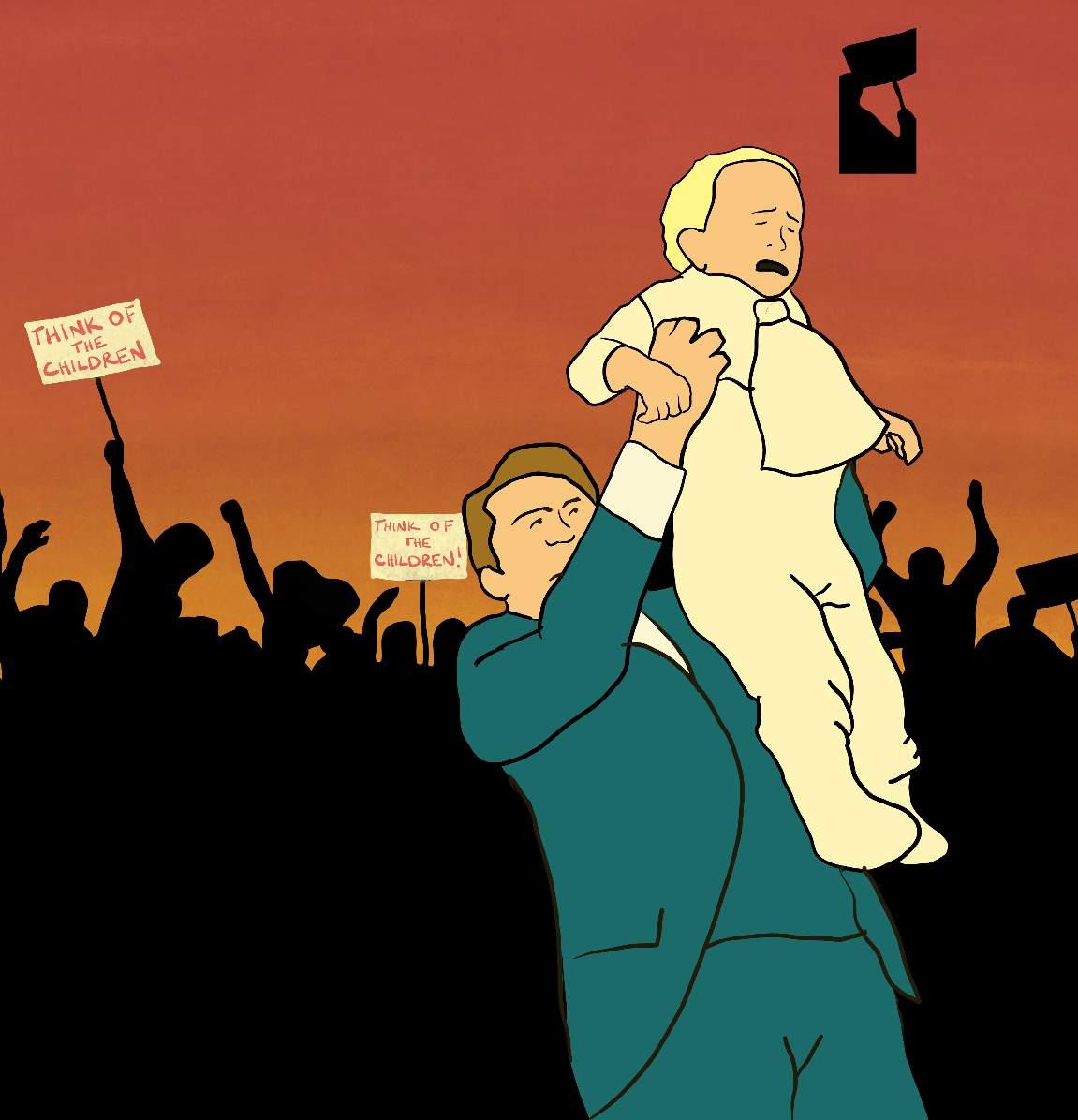
Acceptance of differences?
The existence of queer and trans people?
If people care about protecting kids, why don’t they focus their energy on the millions of kids across Canada living in poverty or the hundreds of thousands of kids at risk of abuse and neglect in unstable households. There are a plethora of cases of clergy members abusing children, yet the “protect our children” crowd isn’t protesting in front of churches.
The truth is that it’s not about the kids, and it never was. Children are simply being used as foot soldiers in a battle to validate biases and prejudice. It’s about control, and how some people feel
that their beliefs about what is right should be forced upon everyone else. It is parents and other adults behaving like the very children they claim to care about.
Boys wearing spring colours and kids listening to stories read by drag queens aren’t going to “turn” gay or trans. These experiences are going to turn them into individuals that understand that colours don’t dictate gender identity or expression and that you can co-exist with all different types of peoples.
Stop using children as pawns in a homophobic and transphobic agenda.
Comment 10 comment@themanitoban.com Vol. 109, No. 25
comment@themanitoban.com
graphic / Dallin Chicoine / staff
Children are simply being used as foot soldiers in a battle to validate biases and prejudice
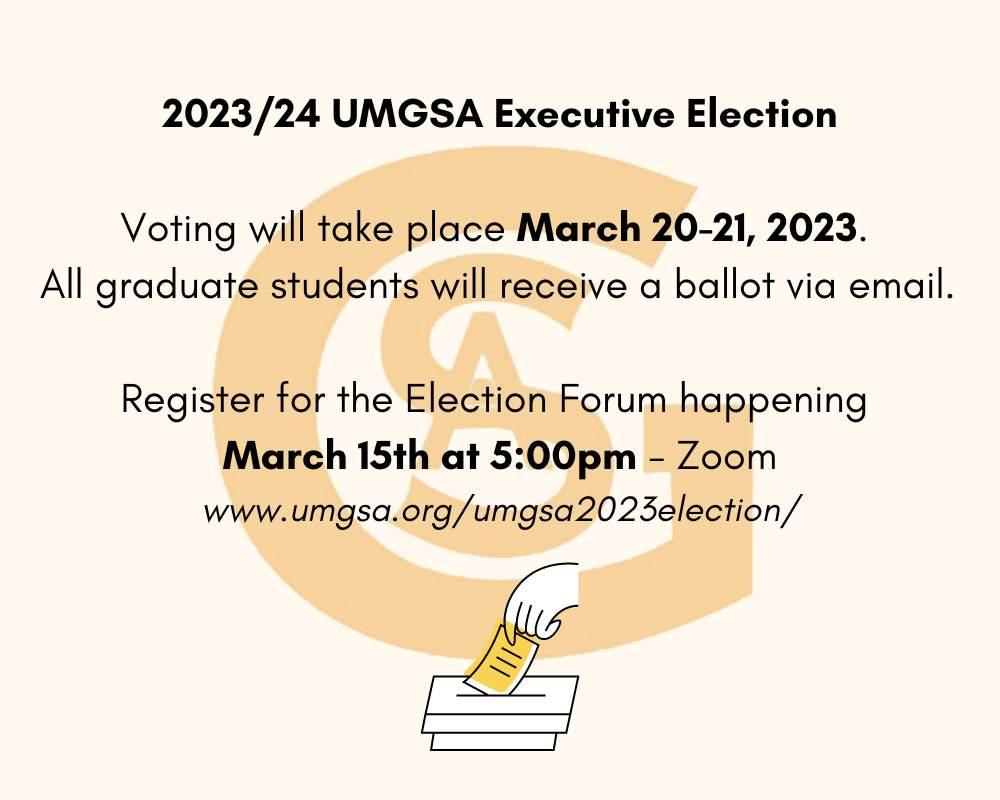

Our academic flames are fizzling
The term’s end is in sight, we’ve got to hold on
Sarah Cohen, staff
nce upon a time, there was a giraffe named Franklin.
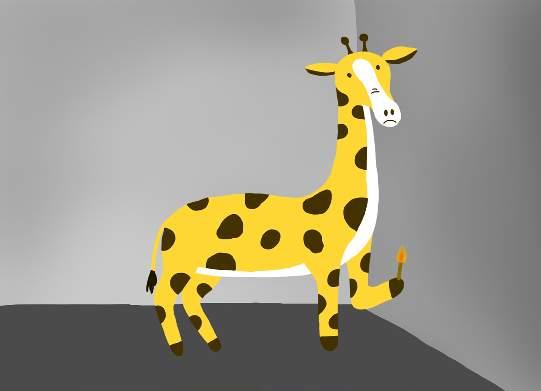
Franklin had a bit of a shorter neck than his friends. He often felt sad because he couldn’t reach the branches his friends could, and he thought he wouldn’t get to be as strong as they were.
Then, one day, he realized he could reach branches lower than his taller friends. Franklin found his special skill. Franklin was ahead of the game and always got the branch he wanted. Even when he had been doing the same thing for years and years he was still excited every time he found a nice, luscious, low branch.
I am not like Franklin. I feel my flame fizzling, and I’m burning out.
I took a full course load during the summer of 2022 and have had full course loads this fall and winter. Essentially, this means I’ve been a fulltime student — with hardly any rest time — for the last 11 months.
I’ve always come in last in academics between myself and my life-long friends, but now that we are all in our own worlds at different colleges and universities I don’t feel like I need to catch up to them. It’s more that I feel like I need to prove to myself that I am capable and smart.
But I am not feeling capable and smart. I had midterms for four consecutive days before reading week, and as hard as I tried to study and do well, I found myself crying while lying on the floor every night. Now that the midterm grades have been released, I am once again lying on the floor crying.
I know that midterms are still up and running with only four weeks left of classes until the end of term, and plenty of you must be as burnt out as I am.
The World Psychiatry defines burnout as a psychological syndrome where people experience prolonged stressors at work, with people suffering from burnout often feeling exhausted, cynical and detached from their work.
While the journal labels burnout as an “occupational hazard,” I think it’s fair to say that as university students, we are in the midst of an intense workplace where stress is often high and long-lasting.
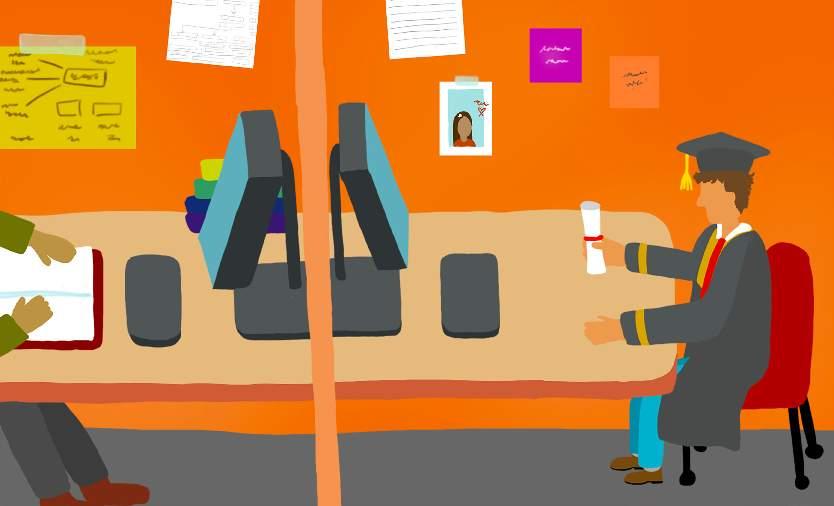
I’ll do my best to give some helpful information to anyone feeling the crushing weight of burnout. Although, I think the majority of us suffer burnout because we are competitive and people-pleasing, and so what I suggest may sound like impossible advice.
The first and most important thing is to learn to set boundaries and say “no.” Being able to say no is a difficult skill but one that is valuable in every circumstance. I associate being able to say no with setting healthy boundaries and self-advocacy.
I think that a lot of us get overwhelmed when we constantly agree to add more projects, activities, classes and jobs to our already full plates. When things get overwhelming, let yourself step away and take something off of your plate. Be okay with saying no.
Nothing is more important than your mental health.
Another large component that goes hand-in-hand with setting boundaries is taking care of yourself. Make time for relaxation. Prioritize time with friends. More than that, go work out. Utilize the gym membership included in our tuition fees. Work out with a friend or two. Sometimes moving your body can make your whole day better.
Lastly, remember that there are people that will support
The fear and change of graduation
Graduating is a lot scarier than one would think
Braden Bristow, staff
For most students, the winter term will be concluding in just a few weeks. For myself, this will be the end of my four-year university career. I cannot lie to you — I am quite nervous about this. For four years, my predominant identity has been that of a student, and in less than two months I will be pushed into the “real” world.
The structure of my daily life has been governed by my education. Once I finish school at the end of April, I will never again be forced to study for a test or read a 30-page article. I am not necessarily sad about that, believe it or not. However, the removal of educational structure and organization will be difficult to adjust to.
My student identity coming to an end also puts me in something of a crisis. Once school is over, I will be forced to sort of rewire myself. I will not be “Braden, student journalist” anymore, I will be “Braden, something or other.”
The fact is that the University of Manitoba, and especially the Manitoban, have provided me with a sense of belonging and identity. But
that belonging comes with a sense of melancholy, as I know that it is coming to an end. I was always aware of that, but only now am I confronted with it.
I am also totally lost as to what my next steps are after I finish my degree program. I could head straight into a career, do some freelance writing or I could take another, shorter program in something else I am interested in. Of course, these pros-
pects are exciting, but they are also frightening.
For the first time in forever, I have no idea what I am going to do next. When I was in high school, I looked toward university, and as a continuing university student I looked toward the coming year of classes. But now, in my final year, the future I look toward is totally unwritten.
I might be lucky to not know what comes next because it means I can make choices
that define my life on my own terms. I could become a writer for some respectable publication, become a civil servant or enter into the study of journalism and film. While the structure of school might fade and the identity that comes with it will change, I will continue to evolve as an individual.
Writing for the Manitoban taught me a lot about writing, and that work does not have to be a chore you dread daily. My studies at the U of M have
you, listen to you and try to help you. Sometimes we need to learn to take control of our own lives, but that doesn’t mean we can’t ask for help. I wish we could all be like Franklin, but it’s okay that we’re not. Do your best and know that you are far from the only person feeling burnt out.
comment@themanitoban.com
pushed the boundaries of how I understood the world and made me grow as a person.
Of course, I am scared of graduating. But I am also proud of myself for completing my degree, proud of all the work I have accomplished and proud of the body of knowledge I have acquired. The fantastic people that I’ve met have made the experience especially worthwhile. Friends, peers and coworkers have been full of ideas that I could never have imagined four years ago.
Many of my professors and instructors have pushed the boundaries of what I thought I knew. One of the first professors I had the pleasure of meeting, doctor Mary-Anne Kandrack, instilled a love of sociology and discourse in me that will never leave.
Change is often terrifying, but change is one of the few things that you cannot avoid. Life moves on, so one can either hide away from it or try to find meaning and purpose in whatever comes next.
12 comment@themanitoban.com Vol. 109, No. 25 Comment
O
comment@themanitoban.com
graphic / Jenna Solomon / staff
graphic / Jenna Solomon / staff
From our archives 100 years ago


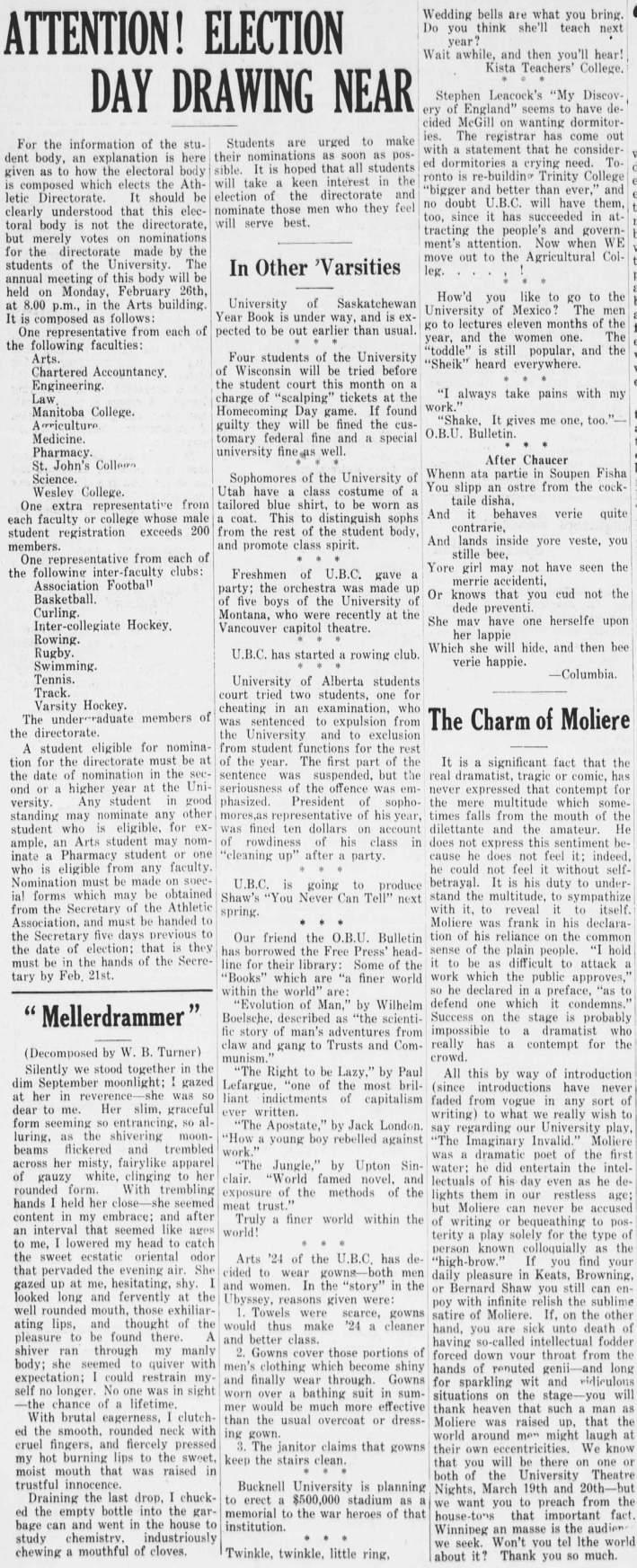
phdcomics.com

rows and columns are divided by black . These need to be filled in with numbers that is a set of numbers with no gaps but can be in any order, eg [4,2,3,5]. Clues in black cells remove that number as an option in that row and column, and are not part of any straight. Glance at the solution to
In Hidato, fill the board by continuing the chain of numbers from 1 to 100 moving any direction or diagonally to the next number.

To complete Sudoku, fill the board by entering numbers 1 to 9 such that each row, column and 3x3 box contains every number uniquely.
For many strategies, hints and tips, visit www.sudokuwiki.org
If you like Str8ts check out our books, iPhone/iPad Apps and much more on our store. The
will be published here in the next issue.
STR8TS 632 SUDOKU
No. 632 Easy
Answer to last issue’s Sudoku

Very Hard
241598736 957623481 683147259 398472165 524316978 176985324 769254813 432861597 815739642
483 96 8124 35 973 52 1279 47 258 © 2023 Syndicated Puzzles

Syndicated
7 8 4 2 1 69

To complete Sudoku, fill the board by entering numbers 1 to 9 such that each row, column and 3x3 box contains every number uniquely.

For many strategies, hints and tips, visit www.sudokuwiki.org
No. 632 1
How to beat Str8ts –
Previous SUDOKU The solutions You can find more help, tips and hints at www.str8ts.com
13 graphics@themanitoban.com March 15, 2023 Diversions 483 96 8124 35 973 52 1279 47 258 © 2023 Syndicated Puzzles 241598736 957623481 683147259 398472165 524316978 176985324 769254813 432861597 815739642
SUDOKU
No. 632 Easy Previous solution - Very Hard
to last issue’s Hidato xkcd.com
solutions
Answer
59 6 41 97 7 1 6 49 1 3 5 © 2023 Syndicated Puzzles 973 STR8TS No. 632 Tough 21365 134296785 2134576 3245867 65789 7658943 9876432 897613524 78243
Like Sudoku, no single number can repeat in any row or column. But... rows and columns are divided by black squares into compartments. These need to be filled in with numbers that complete a ‘straight’. A straight is a set of numbers with no gaps but can be in any order, eg [4,2,3,5]. Clues in black cells remove that number as an option in that row and column, and are not part of any straight. Glance at the solution to see how ‘straights’ are formed. solution - Medium
59 41 97 6 49 1
STR8TS No. 632 Tough 21365
7 8 4 2 1 69
to beat Str8ts –
Sudoku,
number can repeat in any row or column. But...
columns are divided by black squares into compartments. These need to be filled in with numbers that complete a ‘straight’. A straight is a set Previous solution - Medium Answer to last issue’s Straights
If you like Str8ts check out our books, iPhone/iPad Apps and much more on our store. The solutions will be published here in the next issue. can find more help, tips and hints at
Previous solution -
Puzzles
134296785 2134576 3245867 65789 7658943 9876432 897613524 78243
How
Like
no single
rows and
To complete Sudoku, fill the board by entering numbers 1 to 9 such that each row, column and 3x3 box contains every number uniquely
In Straits, like Sudoku, no single number can repeat in any row or column. But rows and columns are divided by black squares into compartments. These need to be filled in with numbers that complete a “straight.” A straight is a set of numbers with no gaps but can be in any order, eg [4,2,3,5]. Clues in black cells remove that number as an option in that row and column and are not part of any straight. Glance at the solution to see how “straights” are formed.
Straights
ONE GOOD TRICK, IF YOU GET CALLED ON A FAKE SERVICE, IS TO BUILD A WORKING VERSION OF IT AND MENTION IT AGAIN THE NEXT WEEK.
Sudoku
Puzzle by Syndicated Puzzles Hidato Puzzle by M.J.D. Doering
Puzzle by
Puzzles
Horoscopes for the week of March 15
Zodiac tips for surviving life at the U of M
Damien Davis, staff ARIES
Your symbol for the week is a Mirror. You’re not sure which generation of your family started the tradition of covering up all the mirrors, but you’re certain that yours won’t be the one to break it. When your mother makes dinner, you watch her gaze fall to her faint reflection in the faucet of the kitchen sink. The house creaks and moans, and a stranger in the shape of your mother assures you that it’s just the house settling. Be cautious of who smiles back at you in the bathroom mirrors on campus and hope that they haven’t caught wind of your suspicions.
TAURUS
Your symbol for the week is a Post-It Note. Something is possessing you while you sleep. Its origins might be unknown, but the consequences it brings present themselves in crude drawings scribbled on the neon yellow square papers that have stopped appearing in your bedroom when you wake up and now follow you to school. When you open a book you’ve never seen before they are there. When you enter a bathroom stall they’re plastered on the walls. Think carefully about who you’ve wronged this week.
GEMINI












Your symbol for the week is a Thimble. The act of self-preservation is not always clean. There is a violence in cutting out those that have had themselves tangled inside you for far too long, but too often have you pricked your fingers on the tools needed for this kind of work. Take care with thimbles given to you by your loved ones. Saws and swords of your self-worth don’t want your blood. Humanity may paint you as a monster, but your children and all the ones who come after them will regard you a hero.
’Toban Tips
Empathy for profs
Dear Toby,
Recently one of my professors contracted COVID and has been really sick. I’m worried for their health and I feel like that worry is consuming me. What can I do for them and how do I deal with this worry?
Thank you, Concerned student
CANCER
Your symbol for the week is a Door. There is a bitterness to leaving, but a warmth in returning, or at least there should be. But lately when you close a door it takes three tries for it to stay shut. There are unimaginable things scratching at the frames of every door to every kind of room you’ve entered in the past week. You’ve done well to keep the door shut, but one day you will make a mistake. This is inevitable, but with this knowledge you can gain advantage over the creatures who beg outside your door.
LEO
Your symbol for the week is a Pen. When sitting down to write this essay you were astonished by how quickly you met the word count. Don’t deny that you felt the excitement of finishing earlier than expected. You noticed, however, every time your eyes fell on the words of your first draft, the words started shifting in ways offensive to your taste and fuelling an irritation inside your skull. Every time you correct a mistake and move on, you come back to find a new one. What class was this even for?
VIRGO
Your symbol for the week is a Photograph. The smell coming from the leather-bound book reminds you of ancient things you’d long forgotten. Traditions and mythos lost to time, and the unfortunate reality that, with no one to take up the mantle of carrying on our legacies, we all die in the minds of those who come after. It’s your turn to pick up the photo album, speak to the dead of your bloodline and be the one to remember.
LIBRA
Your symbol for the week is a Key. Can you remember where you left it? It seemed so important when you were young, to lock up the unfavourable version of yourself deep within so that you could assimilate into the community you’ve been sharing bread with. Someone is here now, gently fumbling with your keys, asking permission to know and write down all the pieces of yourself deemed too malevolent for the world. Who did that? Can you remember what the judge looked like? The executioner? Or perhaps the whole courtroom is a place you made up. Perhaps there is no malevolency in your heart, and the real danger is how quick you are to believe you are unworthy.
SCORPIO
Your symbol for the week is a Pair of Red Shoes. They’re kept in the back of a storage closet, next to the mop and broom. Next to all your hopes and dreams, your childhood art projects and toys. On your good days you sit cross-legged on the hardwood floor and examine them with care, asking yourself impossible questions that not even the hymns vibrating in the heavens could answer. We make our choices in life, and we can never unmake them. However, we can all slip on our red shoes when life seems far too heavy and far too empty.
SAGITTARIUS
Your symbol for the week is a Utility Pole. The sorrow of a throat far too raw to cry out and too worn with responsibility to sing. The electricity in the air repairs the damage done to your vocal cords by strangers and loved ones who thought they could change the frequencies of your desires and your fantasies. Take comfort in the utility poles, in the electricity carrying love letters and happy birthday texts. You have never been alone in this world, even when you were an infant. Born close to the poles, lighting strikes trees inside your eyes and always will.
CAPRICORN
Your symbol for the week is a Cup. Fish swim in your coffee cup, though you’re not quite sure how they appear in every mug you pull from the cupboard. Never when they’re empty, always after three sips and a sigh, small goldfish and guppies all begin swirling inside the vessel. When you reach inside, however, they disappear with a simple blink. It leaves you with a sadness you can’t quite understand yet. Next time, enjoy the company of something so silly and so wonderful rather than trying to explain it away.
AQUARIUS
Your symbol for the week is a Get Well Soon Card. They’re being left in your locker by a stranger. All the people you’ve confronted meet your interrogations with genuine confusion and occasional irritation. After all, nothing in your life has happened to warrant a card of this nature. But every Friday, like clockwork, there it is. A newly designated “get well soon!” card. Different image every time, different handwriting, different languages but you always know what it says. It’s an omen, or maybe it’s a prank. I suppose you’ll find out soon.
PISCES
Your symbol for the week is a Net. The lump in your throat has moved to your stomach and when you’ve found yourself relentlessly cursing your situation deep into the night, the storm makes its home under your bed, pressing an ear to the mattress and trying to comfort you the best it can. Sometimes the things that eat us up inside feel like the only company we are permitted to have. Tie your sheets together and make a net. Place it carefully beside your bed and coax the tsunami under your mattress to come out.
Dear Concerned student, It’s very sweet how much you care about your professor, however, there is not much you can do other than hope for them to have a speedy recovery. If you wanted to do something for your professor to show you are thinking of them, you could send them a get-well card or email, which I’m sure would lift their mood and mean a lot to them!
Worrying is a natural
response to the stressors in our lives, but excessive worrying can sometimes be debilitating. If you catch yourself excessively worrying over negative thoughts, you can try to challenge those thoughts by asking yourself what the probability is that what you’re worrying about will actually happen. In addition, you can chat with a friend, family member or mental health care professional, practise deep
breathing exercises or use meditation to help ease your mind and stop the worries for a while.
We hope your professor feels better soon!
Best of luck, Toby the Bison
To ask Toby a question, email comment@ themanitoban.com

14 graphics@themanitoban.com Vol. 109, No. 25 Diversions
Equity seeking students and the world of journalism
Eternity Martis talks new book, meaningful student supports at U of M lecture
Damien Davis, staff
Eternity Martis, an assistant professor at the Toronto Metropolitan University school of journalism and best-selling author, held a public lecture at the U of M on March 9. The talk discussed her 2020 memoir, They Said This Would Be Fun: Race, Campus Life, and Growing Up, as well as the issues faced by students of colour, queer and transgender students and female-identified students on university campuses.
Martis said that her talk focused on what being an equity-seeking student at a Canadian post-secondary campus means, and what issues need to be addressed for progress to be made, specifically at the U of M.
“What I’m trying to really get at and understand is, what here at the University of Manitoba has been done around racism and issues of racism, what has been done around sexual violence and what still needs to be done?” she said.

While there wasn’t a specific incident at the U of M campus that Martis wanted to address, coming to the university and hearing students’ stories highlighted problems that were familiar for her.
“The issues that were going on 10 years ago at Western [University] for me, the issues that I hear from other students at different campuses are the exact same issues that are happening on this campus,” she explained.
Martis noted that some of these issues include situations where students feel unsafe in their classes, professors mak-
ing racist comments toward students while maintaining their positions at the university and a general uncertainty regarding how to access resources and how to help.
At the same time, Martis has been “really impressed by the amount of work and care and compassion that a lot of the faculty and staff here have for their students.” She said that while it is clear that many people are making an effort to support students at the U of M, there are still institutional barriers that need to be addressed.
She gave the example that if a student says something racist to another student, the student who experienced racism doesn’t have any recourse as there is no process in place to address such an issue. Something Martis hoped that students would take from the event is a sense that she has their backs.
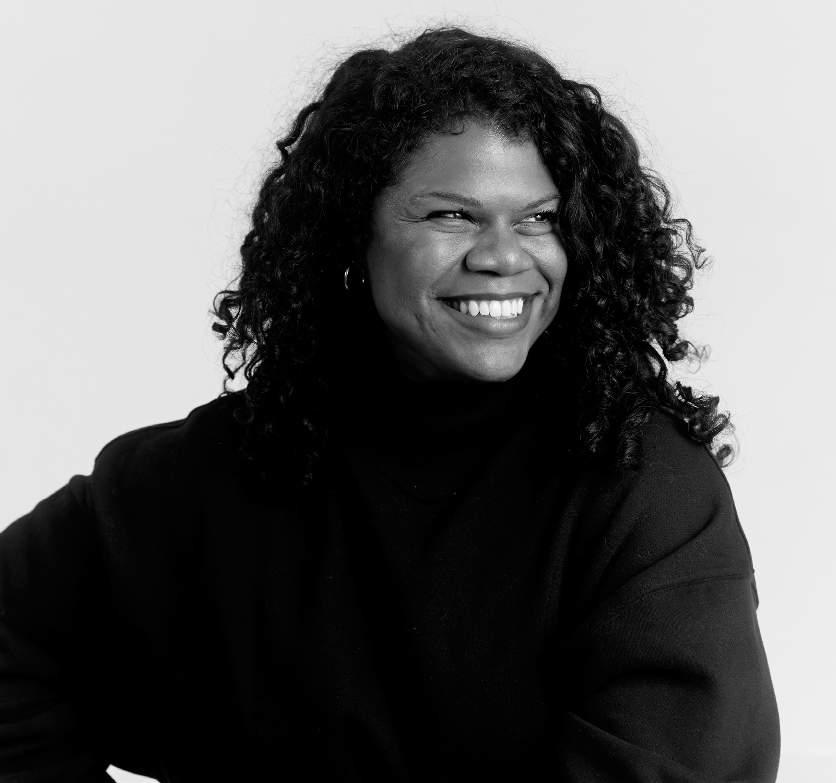
“I’m obviously not an [Equity, Diversity and Inclusion] executive, I am not in a position of power to change things at this university, but I have seen things and I am able to call them out in the favour of students,” she said.
These experiences exist in the world of journalism as
working as an intern in the field prior to the Black Lives Matter movement her professors and employers discouraged her from doing so.
well. Martis explained that her journey into the industry started with her experience at Western University. She had always wanted to write about race and gender, but while studying journalism and
“They would say ‘well, you can’t write about this it’s not newsworthy, it’s inflammatory, we don’t talk about race,’” Martis said. She was also told that she could not write about race or Black communities because she was Black and would have a conflict of interest.
“Which is really ironic,
because white journalists are afforded so much proximity to every community that is out there, and they’re ill-equipped to report on these communities,” she said. “They go out to tell a story and they cause a significant amount of harm.”
Despite feeling discouraged at the time, Martis was motivated by the certainty that these stories were important ways to shed light on the widespread presence of racism in society and its negative effects, “even if the public didn’t want to hear it.”
“I just kept at it and I just hoped that it would change, and I was confident that it would change,” she con-
tinued. “And I was very confident that we were not in a ‘post-racial society,’ which is obviously true now more than ever.”
“It just took some time for the rest of society to catch up, and the newsroom to catch up,” she said.
They Said This Would Be Fun: Race, Campus Life, and Growing Up is available at major retailers.
15 arts@themanitoban.com March 15, 2023 Arts & Culture
photo / Eternity Martis / provided
“Students really just still feel unsure of where to seek support”
— Eternity Martis, author and assistant professor at Toronto Metropolitan University
arts@themanitoban.com
K-pop fandom in Winnipeg flourishing
Winnipeg dancers participate in global phenomenon
Jessie Krahn, staff
K -pop, or Korean popular music, is a multi-genre music scene mostly made up of idol groups — idols being the industry term for K-pop stars — that has found immense popularity outside of its South Korean origins.
K-pop has no single sound to it, as K-pop hits range from the chiming bubblegum pop of girl group Twice to the broody electronic noisiness of boy group NCT. Even then, groups veer off-brand all the time.
The scene has evolved in waves, with the earliest iterations of what is now known as K-pop taking shape in the ’90s. Each of these waves is referred to as a generation, with the newest groups comprising the fourth generation.
U of M Korean language instructor Hyekyung Song recalls ’90s boy group Seo Taiji and Boys pioneering K-pop. The group was among the first K-pop artists to bring hip-hop influences into their styles.
K-pop songs do not have to be performed in Korean to qualify as K-pop. Many K-pop songs are partially, or entirely, in English. Song explained that the inclusion of English lyrics is partly a product of globalization and partly due to artists’ desires to communicate with wider audiences.
“They want to share their stories, experiences with
others, surpassing language barriers,” she said.
Song said that many of her students are led to engage with aspects of Korean culture such as Korean television, films and food due to their interest in K-pop.
Ultimately, though, Song thinks that “K-pop is still in the centre” of her students’ interests.
The K-pop fandom has unique characteristics. New groups are referred to as “rookies,” and fans of particular groups refer to themselves with special monikers. Fans of girl group BLACKPINK are Blinks, fans of Twice are Onces and BTS fans are known as ARMY.
Many K-pop fans are so dedicated, they will learn multiple choreographies for their favourite songs or groups, and Winnipeg’s corner of K-pop fandom is rapidly expanding.
One of the longest running K-pop dance cover group in the city is Galax-E, founded in 2017.

Camryn Neufeld, a student at the U of M, and Jenna Brown, are dancers and administrative members of Galax-E.
Some organizations around the city, such as the Asian
Heritage Society of Manitoba, have started to introduce K-pop dance competitions. However, Brown explained that Galax-E aims to be “laidback” rather than competitive.
Neufeld and Brown said that K-pop groups hook fandoms through more than just their catchy music. K-pop groups’ music videos often have story components and high production value.
idols, but it also connects to the community because then everybody’s like, ‘oh my God, this song is amazing, let’s learn it and post videos,’” Neufeld said.
Brown explained that fans are so dedicated that Drop In Dance Winnipeg attracts beginners and seasoned dancers alike with its K-pop dance classes.
“People who do it like we do, where we actually do it on stage, and people who just want to do it for fun because they love the song or they love the artist, they show up,” she said.
knows it.”
Because K-pop pulls from hip-hop and other music genres pioneered by Black communities, some K-pop groups have been criticized for appropriating elements of dance originating in Black communities.
Lance’s extensive background in music and dance led her to K-pop. She said that she sees value in K-pop cover dancers learning directly from original choreographers.
“Being exposed to the overall dance community, I think, will be another gap into bridging more connections,” Lance said.
One example is BLACKPINK’s music video for its song “DDU-DU DDU-DU.” The music video has over two billion views on YouTube and features gaudy visuals in pink palatial sets, including a famous shot of one member Jennie perched on a bedazzled tank.
Aesthetics are not the sole appeal, according to Neufeld. Idols create strong connections with their fans by crediting them with their successes. Fans will learn K-pop choreographies to feel connected to other fans too.
“Not only does [learning a dance] connect to the
While K-pop cover dance teams like Galax-E have featured at events like Ai-Kon Dream Stage, the recent launch of K-pop Club Nights at the Rec Room has provided dedicated spaces for K-pop fans to connect over their shared interest.
There is no single reason why the K-pop fandom has seen such explosive growth in recent years.
“I think K-pop dance cover crews can learn a lot from learning dance styles like hip-hop and Waacking and voguing, and just being able to improve the quality of their performance,” she said.
“As we’re growing in this scene, I think it’ll be going toward this shift where we’ll have to recognize that.”
More information on Illicit and Galax-E’s performance schedules are available on their Instagram pages at @ galaxeofficial and @illicitdancecrew.
Dana Lance is one of the co-founders of a K-pop dance team in Winnipeg established in 2017 called Illicit. She also believes that part of the draw to learning K-pop choreography is that “everyone else arts@themanitoban.com
16 arts@themanitoban.com Vol. 109, No. 25 Arts & Culture
photo / Galax-e / provided
“Being exposed to the overall dance community, I think, will be another gap into bridging more connections”
—
Dana Lance, Illicit K-pop dance team co-founder
’Toban turntable
U.S. Girls — Bless This Mess
Alex Braun, staff 3/5 Stars
Multi-disciplinary artist and U.S. Girls mastermind Meg Remy never stays in the same place creatively for too long.

The Illinois-born, Toronto-based songwriter started the project over a decade ago as a vehicle for experimental explorations, but has since traversed a number of genres with an ever-expanding cast of collaborators.
The artist’s breakthrough came in 2018 with In A Poem Unlimited, a look at Trumpera, late-stage capitalism and gender politics through the prism of impressively groovy E Street Band worship and blue-eyed soul.
The project’s long and wide career is defined largely by Remy’s penchant for high concept, feminist and eccentric lyrical style. She is admirably fearless in incorporating the specifics of contemporary politics and technology into
her songs.
This conceptual lyrical flair is also, realistically, the only unifying aspect of Bless This Mess, a departure from U.S. Girls’ past two records, but a departure in several different directions at once.
In a broad sense, the album shifts decades from the ’70s to the ’80s, but all kinds of ’80s — from synth funk to soft rock to Italo house to dream pop. The variety is engaging but also deeply confusing.
In some places the excursions work, like the extended boogie workout “Tux (Your Body Fills Me, Boo),” sung from the perspective of a flattering suit that has gone tragically out of style, or the club jam lead single “So Typically Now,” a well-rendered gothic synth pop track that is unfortunately about the COVID-era young professional migration out of big cities.
Elsewhere, songs fall fully flat. Like the UB40-by-wayof-Casio-keyboard-demo reg-
gae duet “Screen Face,” an already-dated musing on the trials of Zoom dates.
Where past U.S. Girls albums sparkled with righteous anger and took decisive, pointed views on their subjects, Bless This Mess is sadly content to shrug its shoulders.
Contemporary topics are presented as if U.S. Girls is making a point about them,
but she shies away from ever taking too strong a stance.
You could call this the complexity and nuance that comes with age and newfound domesticity, and maybe that’s true, but I can’t see what place the bemused snark of a New Yorker article has in a dance song.
Not to put too fine a point on it, but Bless This Mess is
indeed a bit of a mess. In some places a very interesting mess, but too often it’s just frustrating and unfocused.
Bless This Mess is available on major streaming services.
arts@themanitoban.com
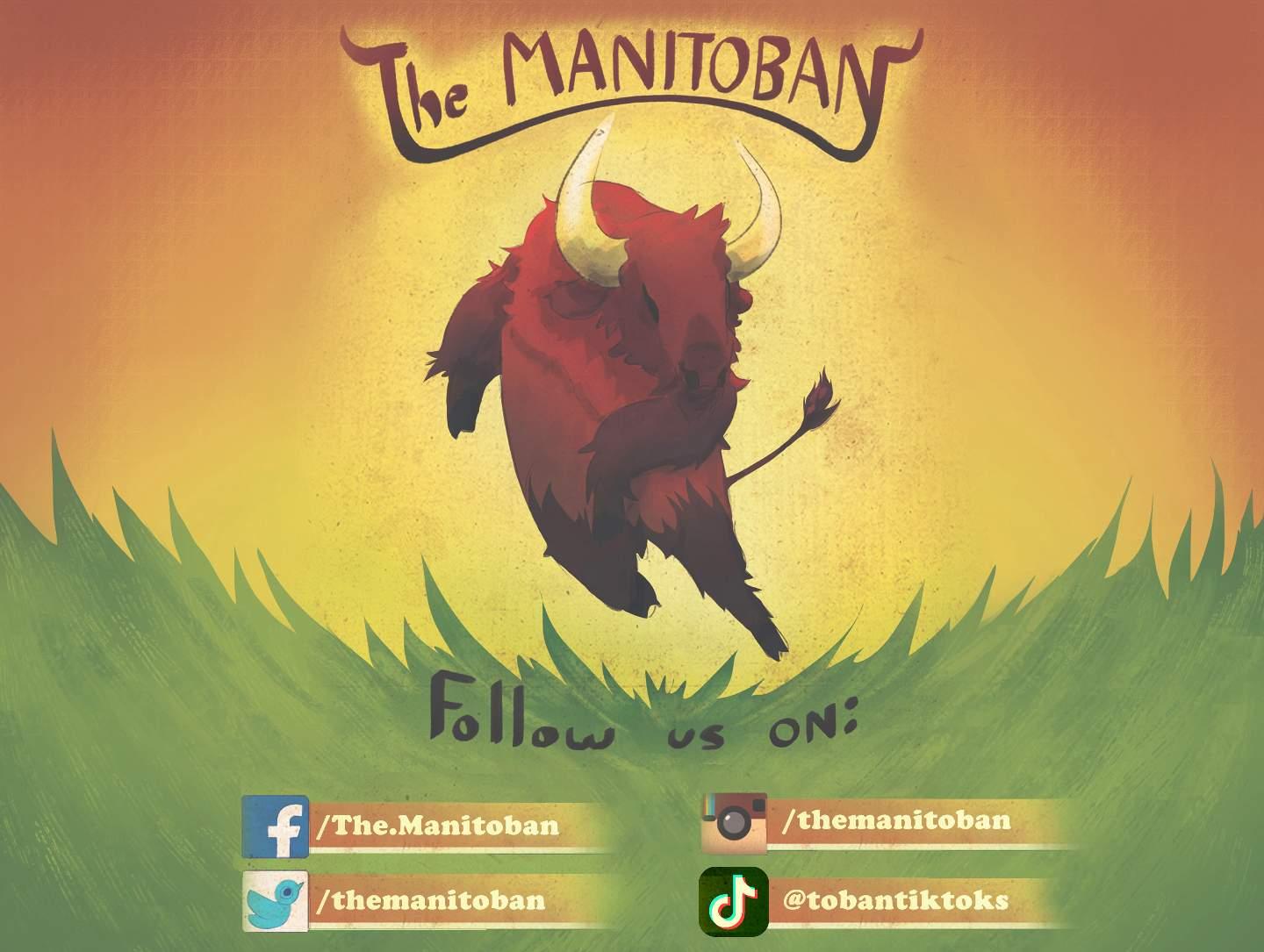
17 arts@themanitoban.com March 15, 2023 Arts & Culture
photo / Royal Mountain Records / provided
A poor man’s guide to March Madness
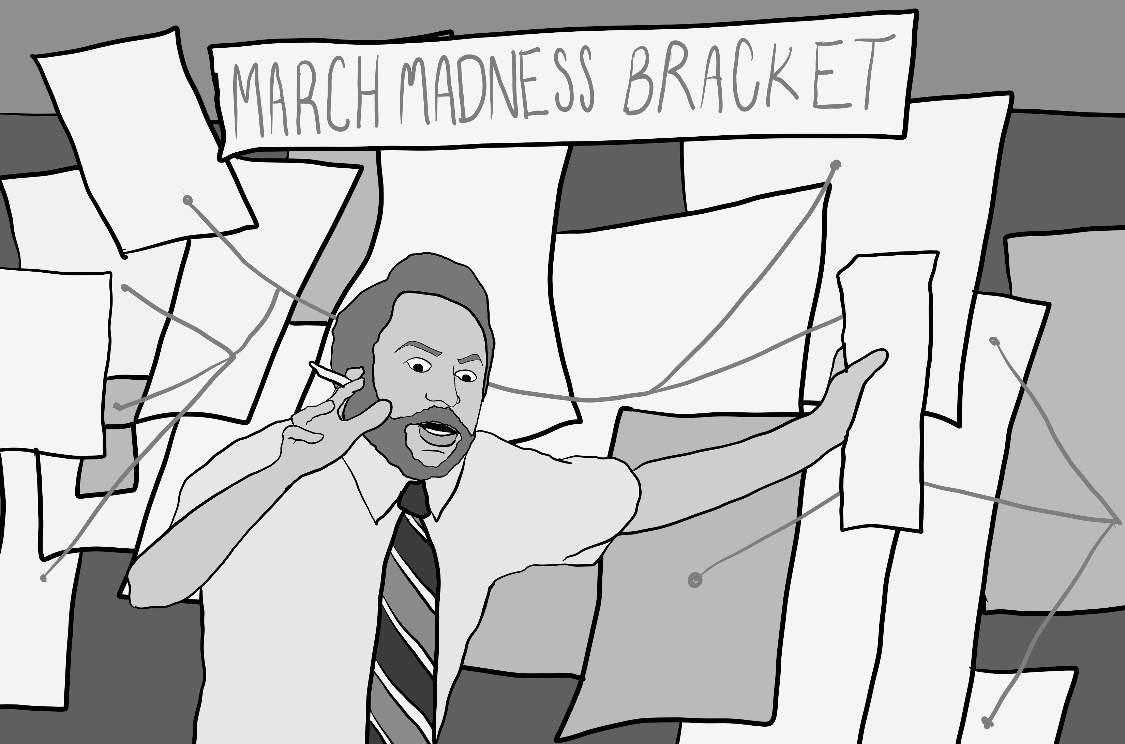
Everything you need to know about chance when filling out your bracket
Joshua Brandt, staff
It’s March. It’s that time of year when we foolishly hope the snow will be gone by April, and when we all take a keen interest in National Collegiate Athletic Association (NCAA) basketball.
We take an interest because we, like many across the world, harbour an aspiration to predict the tournament — to pen an immaculate bracket.
And on this past Sunday, March 12, the NCAA unveiled the 68-team bracket for its mega-popular annual basketball tournament, which has garnered the nickname “March Madness.” It’s called this, in part, because the tournament always delivers delightfully entertaining chaos.
Another thing the tournament always delivers is upsets — and upsets mean busted brackets.
Indeed, there has never been a perfect bracket. The closest anyone has come to perfection was in 2019, when an Ohio, U.S. neuropsychologist rattled off 49 correct picks in a row out of the 63 games to pick.
The probability of getting 49 in a row correct is basically inconceivable. It would be represented by the fraction one over two to the power of 49. It equals such a high number your calculator won’t even show it to you in full.
To help comprehend the incomprehensible probability of filling out a perfect bracket, the Manitoban interviewed U of M statistics professor and department head, Alexandre Leblanc.
The simplest way of defining probability, is to draw on the classic experiment of a coin flip. The chance of getting either heads or tails is 50/50. It’s important to understand that, at its core, probability is just a fraction, how often something occurs.
“Mathematically...it means if you were to repeat the same experiment under the same conditions, very, very, very many times — infinitely, often — in the long run, in proportion, the fraction of the time where you would have seen heads over the total number of flips, would be one half, 50 per cent,” Leblanc explained.
The difficulty with most kinds of probability, however, is that one cannot be entirely sure about the fraction they’ve come up with when the experiment in question cannot be run an inordinate number of times.
This is known as subjective
probability.
In the NCAA tournament, there are 63 games played. And, if you’re just guessing, you’ll have a 50/50 shot for each of the first-round games. But that’s only 32 of the 63. The chances of you getting them right in the second and subsequent rounds drop even more because the teams you picked to win in the first round may not have gotten to the second round at all. Therefore, guessing the firstround games are the simplest because the matchups are fixed.
able how big this is,” Leblanc noted.
To help conceptualize how large that number is, if everyone in the world — roughly eight billion people — was
from making brackets? Of course not. And it shouldn’t, for, at its heart, it’s just good fun.
“It’s easier to win the jack pot at Lotto 649 twice in a row […] it’s 47.2 thousand times easier”
Yet, when asked why he thought people try to construct the perfect bracket, Leblanc said, “well, obviously they don’t realize that it’s not possible.”
— Alexandre Leblanc, U of M professor and associate head of statistics
Nevertheless, the chances of you selecting the first round correctly at random is “one over ten billion […] still impossible to do, still very hard,” Leblanc explained.
But the real difficulty comes with trying to predict the whole tournament correctly. It’s like flipping a coin over and over and trying to get tails 63 times in a row.
As a fraction, Leblanc explained, the probability of selecting every game correctly is represented by one over two to the power of 63, which is an astronomical number.
According to the NCAA, the likelihood of filling out the perfect bracket can be as high as one in 9.2 quintillion.
“This is just unthink-
constantly filling out one bracket per second, in the hopes of generating every single possible outcome, and thereby attaining the perfect bracket, it would take the entire world 36 and a half years to write them all.
“The whole world, working on writing these little papers for 36.5 years, would lend you one paper per each possible bracket,” Leblanc added. “It’s just crazy! It can’t work.”
Even if you were 90 per cent sure who would win each game, the probability of you selecting each game in the first round correctly is still only about 3 and a half per cent.
Moreover, concerning the unfathomable odds of a perfect bracket, Leblanc calculated that “it’s easier to win the jack pot at Lotto 649 twice in a row […] it’s 47.2 thousand times easier.”
Will this dismal probability of success dissuade people
Nonetheless, improbable odds aside, there are still strategies you can adopt to increase your chances of doing well. A University of DePaul professor, a post-secondary school in Chicago, Ill., thought the odds of someone who follows college basketball picking a perfect bracket were only one in 128 billion.
So, there’s a bit more hope if you’re in the loop.
If you’re not, don’t worry. When filling out a bracket, it’s typically a good idea to always pick the higher seeds — especially the number one seeds.
However, it’s also important to remember that the “rankings are made up math numbers,” and that they don’t “actually have any physical meaning when the team hits the court,” Leblanc said.
Nevertheless, the key to a good bracket is to spy out the possible upsets. The six versus 11 and 5 versus 12 games are usually rife with them.
Usually, there’s at least one
upset in every region. Here’s a few I’ve got a good feeling about, because, at the end of the day, picking is mostly about feeling.
In the South region, keep your eyes on the five versus 12 game between the University of San Diego State University Aztecs and the College of Charleston Cougars. Charleston is just one of three teams in the tournament with 30 plus wins.
In the East, Oral Roberts University Golden Eagles may take down perennial powerhouse Duke University Blue Devils, and the University of Tennessee Volunteers’ starting point guard is injured, so take the University of Louisiana Ragin’ Cajuns in a 13 over four upset.
In the Midwest, number one seed University of Houston Cougar’s best player, Marcus Sasser, recently suffered an injury and it’s unknown when he’ll return. So, whichever team you take in the eight versus nine game, advance them to the sweet 16, too.
Finally, in the West, side with the Virginia Commonwealth University Rams over the University of Saint Mary’s Gaels. The Rams are rolling, having won nine games in a row entering the tournament.
sports@themanitoban.com
Sports 18 sports@themanitoban.com Vol. 109, No. 25
graphic / Dallin Chicoine / staff
Education with a destination
Your ticket to a career that cultivates adventure.
If you like change, this is the industry for you. Every day is di erent and it’s always so exciting.”
SUZANNE LAHR | EVENT COORDINATOR RBC CONVENTION CENTRE GRADUATE OF HOTEL AND RESTAURANT MANAGEMENT RED RIVER COLLEGE

Accelerate your career when you join a tourism education program. Browse available programs at travelmanitoba.com/tourism-education
AN INITIATIVE BY:
Bisons punch ticket to nationals
The herd beat rival U of W to claim third in CanWest and qualify for nationals
Quinn Mayhew staff
On their journey to qualify for the U-Sports national championship, the U of M women’s volleyball team was absolutely pushed to the limit at the Duckworth Centre on Friday, March 10.
The game day energy was electric with the stakes being so high — a Canada West conference (CanWest) bronze medal on the line and a berth to the U-Sports playoffs. The five-set nail biter was spectated by more than 1,100 fans.
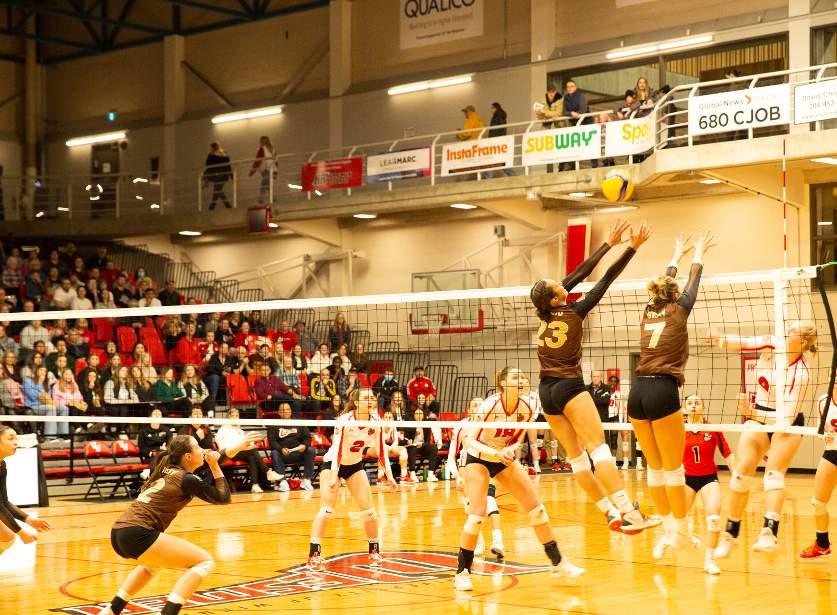
The Bisons played their fierce rival, the University of Winnipeg Wesmen (U of W), whom they had played five times already this season including exhibition games. The winner would punch their ticket to the U-Sports national championship, taking place from March 17 to 19 in Vancouver, B.C.
Going into the playoffs, the U of M was originally seeded sixth in the CanWest rankings, while the Wesmen were seeded fourth.
Ultimately, the game was a huge triumph for the U of M women’s volleyball team, who went into last Friday night’s game fresh off of losing the CanWest semi-finals to the Mount Royal Cougars (MRU).
Despite the previous setback against MRU in the semifinal, the consummate underdog Bisons quickly bounced back.
Leading the charge was none other than superstar rookie Raya Surinx, who absolutely dominated, achieving an astonishing 26 kills in the game, an all-time career high.
Another asset for the Bisons in this game was Katreena Bentley, who was indispensable as she also achieved a career high 60 assists. When the going got tough, Bentley got going.
The Bisons won the first two sets of Friday’s game, but they struggled in the third and fourth sets, losing to the Wesmen 25-20 and 25-21, sending the herd and Wesmen, deadlocked at two sets apiece, to a
decisive fifth set.
In the fifth, the U of M clutched up and prevailed 15-13.
With the win, the herd not only captured a CanWest bronze medal, but also secured a trip to the U-Sports national championship for the first time since 2014.
Another huge factor for the Bisons on Friday night was Julia Arnold, who attained
an all-time career high, and CanWest five-set high, of 35 digs, many of which were absolutely crucial in helping the herd get the win when it looked like the team was at the end of their rope.
Ultimately, this Bisons team is very young and won’t be expected to make much noise at nationals. However, as the herd has proved all year long, they’re good at upsets.
Sports teams’ schedules
Winnipeg Jets
The Bisons will be looking for redemption as they take on the Mount Royal Cougars in Vancouver, B.C. this Friday, March 17, at 10 p.m. in the first round of the U-Sports championship playoffs.
sports@themanitoban.com
Minnesota Wild @ Jets March 8 — Final: 4 – 2
Jets @ Florida Panthers March 11 — Final: 5 – 4 / OT
Jets @ Tampa Bay Lightning March 12 — Final: 3 – 2
Jets @ Carolina Hurricanes March 14 — 6 p.m.
Boston Bruins @ Jets March 16 — 7 p.m.
Jets @ Nashville Predators March 18 — 1 p.m.
Jets @ St. Louis Blues March 19 — 6 p.m.
* All times CDT
Bison briefs
Joshua Brandt, staff
Track and field
This past week from March 9 to 11, the U-Sports track and field championships took place in Saskatoon, Sask. at the University of Saskatchewan Huskies’ campus.
Overall, the herd performed quite well. The men’s team collected a bronze medal, highlighted by a four-by-400 relay gold medal and a four-by-800 silver medal. The women’s
team finished seventh out of 23.
The herd also had some phenomenal individual performances as well — most notably from Madisson Lawrence.
Lawrence crushed the women’s pentathlon, winning it with a total of 4,114 points, a school record.
Lawrence finished fourth in the 60-metre hurdles, third in shot put, fifth in long jump, second in the 800-metre race
Arizona Coyotes @ Jets
and first in high jump with an outstanding leap of 1.80 metres — nearly five feet and nine inches.
For reference, Lawrence’s height is listed at five-footseven. She can jump over herself.
Lawrence also captured gold in the individual women’s high jump event as well. For all her herculean efforts, Lawrence was named U-Sports field athlete of the year.
Anna McConnell also won a gold medal for the herd. She tossed a shot put 14.44 metres, which is roughly 50 feet, or the height of five basketball hoops.
Max Speiser finished third in men’s heptathlon, accumulating 5,040 points. His point total was bolstered significantly when he finished first in both the high jump and the pole vault events.
Ultimately, it was a successful season for Bisons track
March 21 — 7 p.m.
and field. Both the men’s and women’s team competed hard at the U-Sports championships, bringing home some hardware to prove it.
sports@themanitoban.com
20 sports@themanitoban.com Vol. 109, No. 25 Sports
Leading the charge was none other than rookie superstar Raya Surinx
of M Bisons — Women’s Volleyball
Bronze
U
CanWest
Medal Game: Bisons @ Winnipeg Wesmen March 10 — Final: 3 – 2 U-Sports Championship Playoffs: Bisons @ Mount Royal Cougars March 17 — 10 p.m.
photo / Ebunoluwa Akinbo / staff


























 Kasey Pashe, staff
Kasey Pashe, staff







































